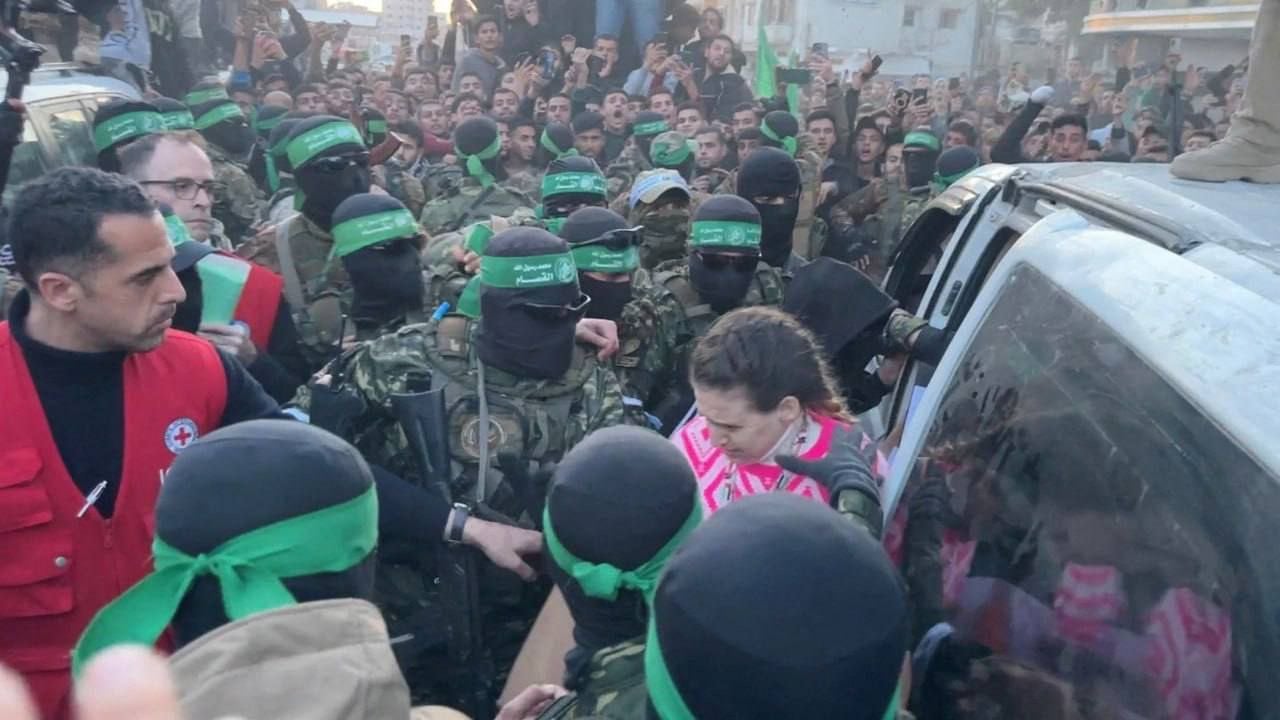
“A few hundred people crammed together to make it look like endless masses.”
By World Israel News
Former IDF spokesperson Peter Lerner, a seasoned expert in media coverage, recently shed light on Hamas’s ongoing manipulation of public perception during the release of three Israeli hostages on Sunday.
The hostages, freed after 15 months of captivity as part of a 42-day ceasefire agreement, were handed over to the Red Cross in Gaza amidst highly orchestrated media optics.
Lerner took to social media platform X to address the portrayal of events on the ground, calling out the staged scenes meant to project Hamas’s strength. “I was asked several times today about the optics of Hamas’ obvious strength.
Here’s the real optics,” he posted, sharing both authentic and altered images to highlight the manipulation. “A few hundred people crammed together to make it look like endless masses. Today the images from the ground were orchestrated by Hamas; they wanted to project power. Everything they show is manipulation.”
This strategy of media control is not new for Hamas. During the 2014 Operation Protective Edge, the group implemented a strict campaign to control narratives coming out of Gaza.
Documents from the Meir Amit Intelligence and Terrorism Information Center reveal that Hamas’s Ministry of Interior and its media division issued explicit directives to shape coverage.
Journalists were prohibited from photographing rocket launch sites or showing Hamas operatives’ faces, and every terrorist casualty had to be reported as an “innocent civilian.”
The risks for journalists who defied these orders were significant. According to Honest Reporting, reporters who documented rocket launchers near civilian areas were expelled from Gaza if they exposed the findings.
Others waited until they were safely outside Gaza before sharing their accounts of what they had witnessed.
These documented examples of Hamas inflating casualty numbers and tightly controlling media narratives reveal a consistent strategy over the past decade.
Lerner has also been vocal about Israel’s shortcomings in public relations, particularly after the October 7 attacks. In an interview with Haaretz, he criticized Israeli leadership for failing to provide a coherent communication strategy as global sympathy for Israel began to wane.
Having participated in 750 international interviews, Lerner described feeling unsupported by the government in addressing pressing questions about Israel’s objectives and future plans. “I, as a spokesperson, started fielding questions on the subject already on October 10: ‘What are your goals, what are you trying to achieve, what are your plans for the future?’” Lerner explained. “Very soon I understood that I didn’t have the answers to these questions. Not because they haven’t decided, but because they’re just never going to decide.”
As Hamas continues its calculated efforts to influence global opinion, Lerner’s insights serve as a reminder of the importance of countering propaganda with transparency and factual reporting.
These tactics, rooted in manipulation, highlight the ongoing challenges of navigating narratives in one of the world’s most complex conflicts.
The post Hamas used ‘altered images’ to fakes huge turnout at hostage release appeared first on World Israel News.